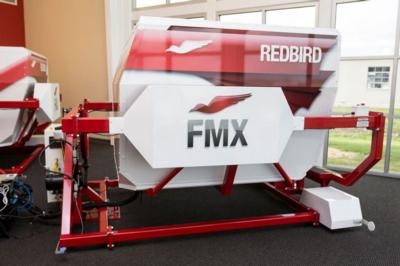Mon, Jul 20, 2015
Some General Help For Those Participating In Simulated Spot Landing Contest
By Maria Morrison
Do you think you have what it takes to land a virtual airplane on a specific spot on a virtual runway? If you do, the EAA Spot Landing Contest might just get you and a friend in to AirVenture 2016 for free.

Using Redbird flight simulators, Oshkosh AirVenture is sponsoring a daily virtual Spot Landing contest for anyone-certified pilot or not-attending the airshow. The simulation begins on a stable approach to the runway and it is up to the pilot to land the airplane as close as they can to a pre-determined spot. Meanwhile, their landing is broadcast to those awaiting their turn via TV. All those who try to land the simulator will receive a pin for their participation. When the contest ends each day at 5:00 pm, the first, second, and third place winners are determined. The contestant closest to the spot is awarded two week-long wristbands to AirVenture 2016. Second place wins two seats on the Ford Tri-Motor, and third gets two tickets for the Bell 47 helicopter. The next morning, those people are announced in AirVenture Today and on the EAA Radio before the contest begins again.
Spot landings are easy to learn but difficult to master. The key to landing where you want is to make that spot the only constant on your windshield. The spots you will land short of will pass upwards on your windshield, and places you will land long for move downwards on your windshield. The spot that you will land on will not be moving.
Another key to spot landings is to remember the old saying: “pitch for airspeed, power for altitude”. You want to maintain a stabilized approach so that you can remain in control of everything. If your final approach speed is 70 mph, trim for 70 mph. That way, if you end up high, you can reduce power and you will descend without changing your airspeed. The other option, both decreasing power and changing pitch, would be changing two variables at once.
In a spot landing, you want to eliminate as many variables as possible. Make power adjustments as usual, extend flaps (if you have them) when you always do, and fly the approach at the speed you are used to. When making a spot landing, you might want to set your aim point slightly before the actual spot to compensate for the flare, but not by much.
(Image provided by Redbird)
More News
Airport Marking Aids Markings used on runway and taxiway surfaces to identify a specific runway, a runway threshold, a centerline, a hold line, etc. A runway should be marked in ac>[...]
"It is extremely difficult, if not impossible, for manned aircraft to see a drone while conducting crop-enhancing and other aerial applications at low altitudes and high speeds. We>[...]
Aero Linx: The Skyhawk Association The Skyhawk Association is a non-profit organization founded by former Skyhawk Pilots which is open to anyone with an affinity for the A-4 Skyhaw>[...]
“The T-54A benefits from an active Beechcraft King Air assembly line in Wichita, Kansas, where all required METS avionics and interior modifications are installed on the line>[...]
Aero Linx: Aerostar Owners Association The Association offers the Aerostar Owner a unique opportunity to tap an invaluable source of information concerning the care and feeding of >[...]
 ANN's Daily Aero-Term (04.28.24): Airport Marking Aids
ANN's Daily Aero-Term (04.28.24): Airport Marking Aids Aero-News: Quote of the Day (04.28.24)
Aero-News: Quote of the Day (04.28.24) ANN's Daily Aero-Linx (04.28.24)
ANN's Daily Aero-Linx (04.28.24) Aero-News: Quote of the Day (04.29.24)
Aero-News: Quote of the Day (04.29.24) ANN's Daily Aero-Linx (04.29.24)
ANN's Daily Aero-Linx (04.29.24)



